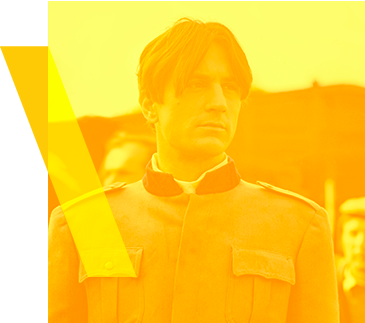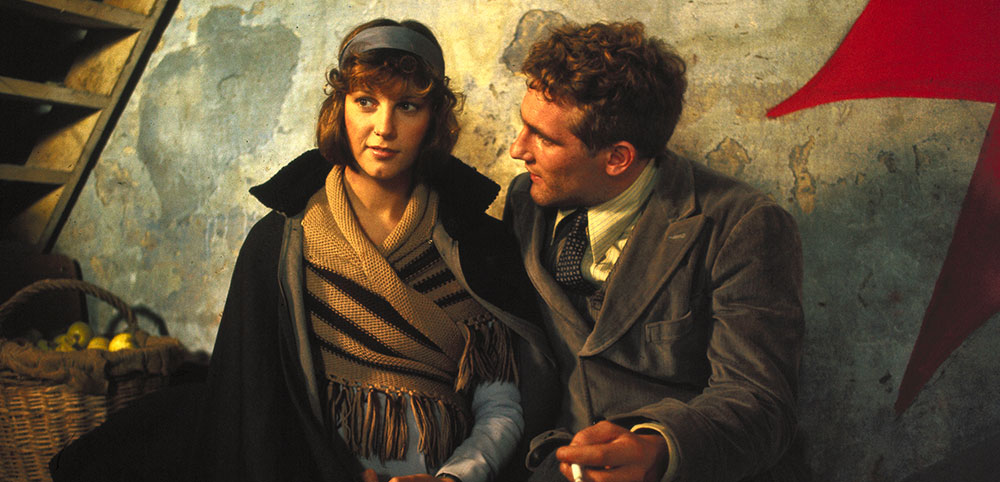1900
A classic reborn, a master disappears
Cult. While we learn about the death of director Bernardo Bertolucci, Wild Side reissues this classic restored in a flamboyant limited edition cabinet. Back on a fresco as fascinating as it is confusing.
By Philippe Guedj

What a strange week for 1900. Barely the monumental and sulphurous classic Bertolucci reborn from the ashes in a final Blu-ray edition, November 23, that three days later, his director returned to the dust. At 77, the filmmaker disappears in a deluge of praise and acrimony : for several days, to the tributes of his admirers, respond the whistles of those who will never forgive the director the psychological trauma suffered by his actress Maria Schneider during the shooting of the sodomy scene of the Last Tango in Paris (1972).
“The birth and death of a utopia, that of communism ravaged by the rise of fascism, in the rural Italy of the twentieth century, Bertolucci signed his Apocalypse Now”
The arguments of each other clash with social networks to know if Bertolucci has, in the name of art, ruined the career and the life of the actress taken by cancer in 2011. Genie, bastard, the two? In this vivid context, the restoration in 1900, its next film, takes on a particular dimension. Just like his author, 1900, it’s in the same film paradise and hell, God and Satan. Scenes of absolute pastoral beauty, or impregnated with the work of Caravaggio, breathtaking panoramic shots magnifying the life of the peasants of Emilia-Romagna, the heartbreaking music of Ennio Morricone… but also moments of a violence and sadism still unbearable today. Between the two, a libertine eroticism without complex – less morbid than the Last Tango… – but just as memorable.
The double masturbation fixed shot of Robert De Niro and Gerard Depardieu by the prostitute embodied by Stefania Casini may last only a handful of seconds, she has lost nothing of his radical boldness. Ambitious to tell the birth and death of a utopia, that of communism ravaged by the rise of fascism, in rural Italy of the twentieth century, Bertolucci signed his Apocalypse Now.
A masterpiece in which he barely drowned himself and in which he did not recover from. We must also note that both of that movies share the same Chief Operator and that the mythical Vittorio Storaro, had been literally stolen from Bertolucci to Coppola, right after the shooting of 1900. This shooting, as a tired Bertolucci confessed in his last and moving interview to Wild Side, was related to a dream which he wanted with no end. Forty-four weeks of filming during eleven month, a budget of six millions dollars – increased at nine millions throughout the shooting- an international casting, a director overworked by his own megalomania…and at the end a saga of more than five hours released in Cannes in 1976, and followed by a conflict between Bertolucci and his producer who was willing to (and managed to) edit a shorter version of the film. On the verge of beginning this adventure, Bertolucci just released the sucessful and scandalous, The Last Tango In Paris…Even if that movie earned a huge amont of insults in his own courntry (and an withdrawal of his civics rights), it remains an excellent box office hit at a international level. Sensitive to the intense politics in Europe in the 1970’s, Bertolucci want his next motion picture to be a definitive masterpiece of the Italy of the XXth century (which explain the notorious title of “Novecento”), its roots and the ideological shock that occured there. “We were experienced the end of this long wave of May 1968 and I felt that 1900 was a political mission. I was willing to make a movie, which will build a bridge between the USSR and the United States, the merger of a cinema close from the earth, close from reality and a cinema more melancholic” explains the director.
During more than two years he will write, alongside his brother, Giuseppe, a story which will begin on the 27th January, 1901 : On the day Verdi’s death, symbol of the italian unity and therefore of the XIXth century. The movie follows the common path (then separate) of two chilhood friends living in the same farming exploitation : Alfredo Berlinghieri, grandson of the owner (played by Burt Lancaster) and Olmo Dalco, a bastard raised among the sharecroppers, ran by Leo Dalco (Sterling Hayden).
Following the rhythm of the harvests, Alfredo and Olmo (a dreaming casting portrayed by Robert De Niro and Gérard Depardieu), the rich and the poor, mess around together before their social background and WWI tear them apart. Growing up, they meet eachother briefly. One has become the padrone of the farming exploitation but experience difficulty in imposing his authority in front of the growing influence of the facist foreman, Attila (played by Donald Sutherland, absolutly terrifying). While, the other demobilized after one year on the front line, progresses overtime as a leader of peasants exploited by the upper class – then oppressed by the despotic Attila and his black jackets…The narrative operates tree movements : a solar stage, joyful, bath in a light at 100% naturel, as bland as the night of a full moon among which Alfredo and Olmo blossom and trick the Death (memorable scene of the railsways…). One second, much more darker, follows the arisen of the facism, where Storaro is inspired by the german expressionism and increases the sources of artificial lights. Finally, the last scene, to mark the facist defeat and the release of Italy, embrace a blast of colors. Symbolizing the political sympathies of Bertolucci, who play around and provoke the american studios whom produce his film, with a huge bright red flag, made by peasants start from hundreds of other. Used as a tent for the first trial of the padrone deprived by his former employees. It is too bad that it end with a last spin of old De Niro and Depardieu, trought a dreadfull make up, signed Gianetto de Rossi.
An iconic image of the excesses of this fascinating pavement to watch for its historical and visual ambitions, but which we almost always look at a certain distance. First, for a superficial reason related to the italian productions and to the international casting. Regardless of the audio version we choose (English, French or Italian) it is impossible to fond the totality of the original voices. In englsh we are pleased to ear the own voice of Lancaster, Hayden, De Niro and Sutherland…but when Depardieu arrived for his part of Olmo as a grown man, it is difficult to not switch for the french version. Furthermore, this one gives beautiful french old timed voices (Francis Huster for De Niro, Jean-Pierre Kalfon for Sutherland…) but experienced hard time to match the real actors.
As for the Italian version…It is up to you ! But beyond this technical detail, 1900 is not an easy film to embrace fully. Theatrical, extravagant, the Bertolucci’s direction of actors is so much difficult to define because the characters act and interact in a whimsical way and because the dialogues are often confusing. Except for the magnificient dying patriachs figures, camped bu Lancaster and Hayden, it is difficult to feel the humanity of the anti-heroes 1900 and thus to be moved by them. Much more concerned with his sublime aesthetic compositions and his political purpose than with his characters, Bertolucci gives free rein to his voyeuristic fascination for sex and a certain sadism.
He admitted that, in the interview in bonus of the Blu-Ray : Today, he cannot watch the unbearable scene of the boy’s murder by Sutherland. While the slaughter of the kitty, leave the actor with a strinking souvenir. These are just moment of the film, but the shock that it creates provoke a feeling of indelible disgust that the narrative never seeks to erase. Attila and his wife, associate in the infanticide, are two monsters who seek superpower by reducing every human being to an object status. This is the principla of the facist ideology, whose film applies to demonstrate the horror. Extremely raw, the film is sympthomatic of a decade where the mentalities allowed this cinema popular and without filter, at the same time. Hopefully, it gives pieces of visual bravery – as well as a final shade on the benefits of a proletarian dictatorship – not to steal its title of major masterpiece of the 70’s.
->1900 de Bernardo Bertolucci.
Set 3 Blu-ray + 3 DVD interviews with Bertolucci, Sutherland, De Niro and Vittorio Storaro (the chief operator who supervised the new master 4K begin with his memories of 1900 to develop an incredible analysis of the future of his business with digital ) + A booklet of 160 pages of rare archives and many photos whose text is signed by Giuseppina Sapio.
Side, 69,99 €, limited edition of 3,000 copies.


